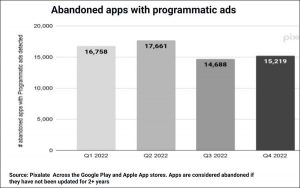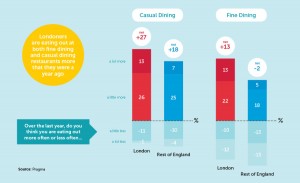Direct sales differ from indirect sales in one key way: the relationship between salesperson and customer is one-on-one. It has been shown that this personal relationship can greatly increase the effectiveness of the salesperson’s methods, at least when compared to indirect sales. But perhaps this should come as no surprise. After all, direct sales have been around since the dawn of civilization; when hunter-gatherers settled to build farms and towns, the first direct sellers began to sell their wares across Europe, Africa and Asia. In other words, direct sales is the oldest sales model there is.
But what does the direct sales environment look like in 2016? And how did we get to this point? Hunter-gatherers are, after all, pretty far removed from where we are now. Let’s take a look at the last half-century or so to gain some insight.
The Door-to-Door Salesman
Direct sales is personified, at least in the United States, by the traveling door-to-door salesman. This figure, a staple of post-war America, inspired such acclaimed works of art as Arthur Miller’s seminal stage play, Death of a Salesman, and the Maysles brothers’ 1969 documentary, Salesman. To say that the door-to-door salesman has had an impact on American culture would be an understatement.
Of course, it wasn’t just the cultural icon of the salesman himself who made an impact (though some would later become hugely successful with their own enterprises, helping to solidify their reputation). So too did the many products, chief among them: vacuum cleaners, illustrated Bibles, and brooms, mops and stain removers. The door-to-door model took on a life of its own, becoming an American institution unto itself. But all things must change, and so, direct sales continued to evolve.
Parties Become the New Fad
Door-to-door sales work, but they aren’t right for everyone or every product. The party plan takes a slightly different approach, and has proven to be immensely successful. Tupperware, Prince House, Avon, and other direct sales companies have all been sold using this model. The idea is simple: rather than go door-to-door, salesmen and women work alongside a host to plan a social gathering… a party. Friends and family are often invited to attend, and food and drink are often provided. It creates a laid back, social, amenable atmosphere. Then, the salesperson can present the wares.
Like so many things, the direct sales party plan truly came of age in the post-war period. In the 1950s, the United States was a land of opportunity and prosperity. Young couples bought houses and had children; spent disposable income on extravagances like televisions, refrigerators, and automobiles; and started paying attention more to domestic matters. In this atmosphere, the Tupperware party was born. Today, many direct sales companies (like Jamberry) still leverage party plans.
The Internet Age
Party plans demonstrated conclusively the appeal of being able to shop from home. Not surprisingly, it quickly caught on. But could there be another way? What other means were there to reach customers other than door-to-door sales and party plans? Technology would provide the answer to these questions. With the birth of the internet in the 1990s, and its maturation in the early 2000s, salesmen and women found an all-new tool at their disposal.
With the internet, direct sellers could grow their business by building networks that would have previously been unavailable to them through word of mouth. Facebook and Twitter make it possible to go door-to-door digitally, and Ebay, Amazon and Etsy provide an easy means of selling products. More than that, the internet enables direct sellers to manage orders, ship directly to customers, run sales reports, and track their income, while also using social media to stay connected with their customers and keep personal relationships strong. Is it working? If Etsy is anything to go by, absolutely. As the Wizard of Oz‘s cowardly lion might say, “Etsy, Ebay, and Facebook, oh my!”
Direct Sales Isn’t Going Anywhere
Direct sales is alive and well today. Individuals and businesses alike continue to leverage this proven model. Companies like Amway, Avon, Mary Kay, and Tupperware are routinely at the top of the direct sales industry, all due to their ability to adapt to the rapidly changing market (and because the tools they provide their salesmen and women help create the best sales experience possible). Amway, which was founded in 1959, is currently ranked first among the top 100 competitors, and is ranked number 30 on Forbes’ Top Private Companies list, proving that the art of direct selling is alive and well.
True, no two salespeople are likely to have the same experience, and some are better suited for it than others. But the basic premise is an attractive one: sell your wares directly to the people who will benefit from them. In the process, you may form relationships that last a lifetime. There are many success stories to be found online, whether on your social feed or the popular Amway blog. Whether direct sales is for you is for you alone to determine. But this is how direct sales has gotten to where it is today! Will you be a door-to-door salesperson or an internet mogul?
Digital & Social Articles on Business 2 Community(85)






